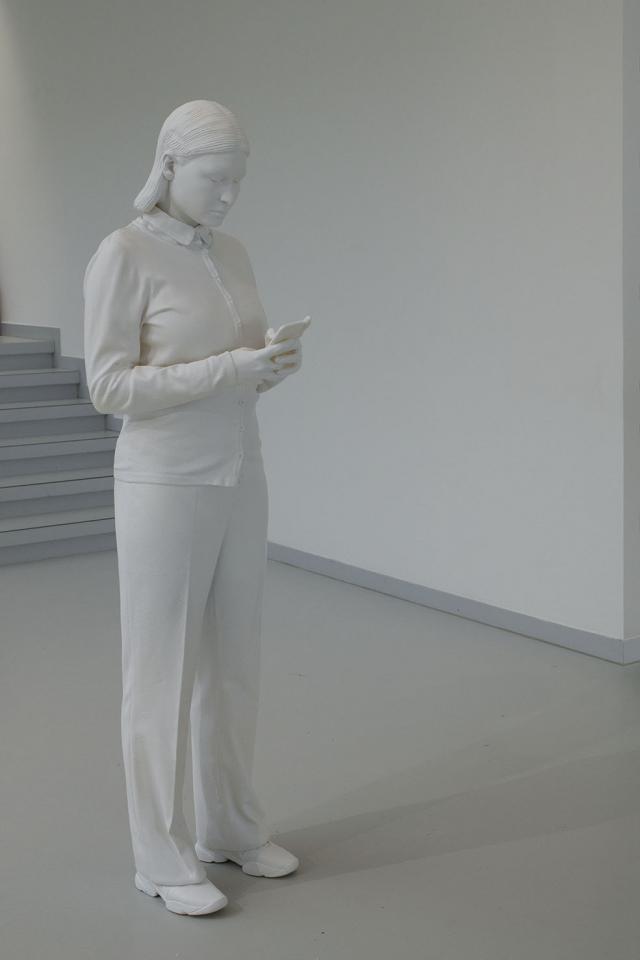A collector of texts and images, Alex Hanimann draws from the visual torrent of the media world to extract the subjects of his works. By drawing, copying or representing chosen elements, he effects different transformations—simplification, abstraction, repetition—in such a way as to place his work between reality and reproduction.
The sculpture Untitled (Maria), 2020, stands in this interzone. Created through 3D printing, this identical copy of a young woman named Maria was made possible by a three-dimensional scan. The work highlights the power of technical innovation in the area of hyperrealist reproduction of the human body, and pushes the boundaries of a new field of experimentation that is opening to artists.
Absorbed by her smartphone and connected to the digital world, she escapes any context of time and place. Highly realistic in appearance, down to the detail of the folds in her clothes, she is physically present among us, while being totally detached from a real social environment. Another distinctive feature is her white monochrome materiality, which recalls the plaster casts of traditional sculpture.
Untitled (Maria) reveals our relationship to the world, through a simple gesture that has become universal, one that we can all recognise ourselves in. Her natural posture evokes the simultaneity of the here and the elsewhere, as well as the coexistence of our physical and virtual presence. More broadly, it is a question of our social interactions through the evolution of new technologies.
The sculpture Untitled (Maria), 2020, stands in this interzone. Created through 3D printing, this identical copy of a young woman named Maria was made possible by a three-dimensional scan. The work highlights the power of technical innovation in the area of hyperrealist reproduction of the human body, and pushes the boundaries of a new field of experimentation that is opening to artists.
Absorbed by her smartphone and connected to the digital world, she escapes any context of time and place. Highly realistic in appearance, down to the detail of the folds in her clothes, she is physically present among us, while being totally detached from a real social environment. Another distinctive feature is her white monochrome materiality, which recalls the plaster casts of traditional sculpture.
Untitled (Maria) reveals our relationship to the world, through a simple gesture that has become universal, one that we can all recognise ourselves in. Her natural posture evokes the simultaneity of the here and the elsewhere, as well as the coexistence of our physical and virtual presence. More broadly, it is a question of our social interactions through the evolution of new technologies.
